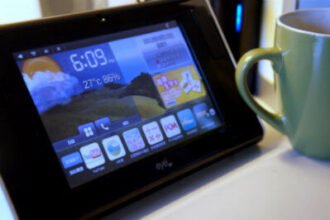Since the dawn of the personal computer, the hardware industry has relied on a cycle of obsolesce of just a few years. Working with their partners in the software community, they created a symbiotic relationship where each operating system and application upgrade strained the performance of existing computer hardware forcing consumers and businesses to regularly upgrade their machines.
Since the dawn of the personal computer, the hardware industry has relied on a cycle of obsolesce of just a few years. Working with their partners in the software community, they created a symbiotic relationship where each operating system and application upgrade strained the performance of existing computer hardware forcing consumers and businesses to regularly upgrade their machines.
In the last decade, though, this endless cycle of upgrades has been challenged as “Moore’s Law” has finally given us computers that outstrip the upgrades of even the most aggressive of software providers. Fortunately for the manufacturers, the battle has moved on to tablets and smartphones.
With the release of yet another wave of devices for Christmas, headlined of course by the iPhone 5, its time to wonder if we are repeating the upgrade arms race of the PC era or ask if this time it is different.
The mobile era is not the same as the PC era
The first generations of mobile devices have each added desperately needed features that required major changes to the machines themselves such as better cameras, screens and more processing power. However more recently, unlike the early years of PCs, software developers aren’t helping the manufacturer’s cause. For the developers of apps, the main game seems to be to move functionality into the cloud and to get closer to their users online rather than relying on the hardware or operating system provider as an intermediary. Good examples of this include applications such as Dropbox and Spotify.
At the same time, mobile technology has inherited the Moore’s Law driven hardware of the PC era giving it a head start and the ability to rapidly out-perform the requirements of app developers. Many users are sitting on first generation tablets and third generation phones with no need to upgrade even to run the latest software releases. “Cool” is now more often in the features, particularly delivered through the cloud, than in the device.
Winning with cloud
Cloud has created a revolution in the capabilities that users can access and potentially broken the endless need to upgrade devices every couple of years. However, people have been left confused. How many people actually understand how iCloud works to backup their iPhone or iPad? People are often surprised and worried when they find out how much information they are sharing about their location or online activities through cloud services.
In the device wars playing out in the tablet and smartphone space, the winners won’t necessarily provide the best hardware, rather they will be able to explain the complexity of the cloud services in a way that gives consumers both confidence and the ability to fully exploit features that today they are only scratching the surface of.
Imagine a world where you can easily share music across all the devices in your house, seamlessly watch the first half of a movie on your TV and finish it on the bus and just know that all of your work documents are securely backed-up. All of this is possible today, but few people actually know how to do it.
A prediction for 2013
I’ll make one prediction for the next year. There will be a major security breach in a mainstream service that will make consumers and corporates alike get nervous about the proliferation of cloud services.
It’s into this breach that a trusted brand that is ready to make mobile devices, apps and cloud simple and safe can step. If they do, then we could see them dominate this space like the “Wintel” alliance did for two decades.







